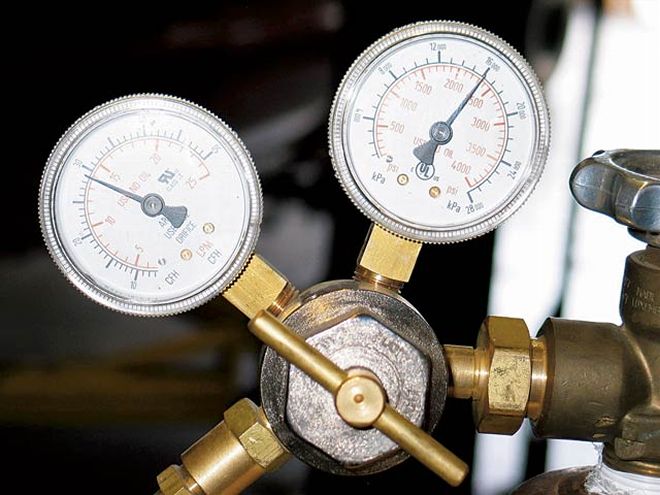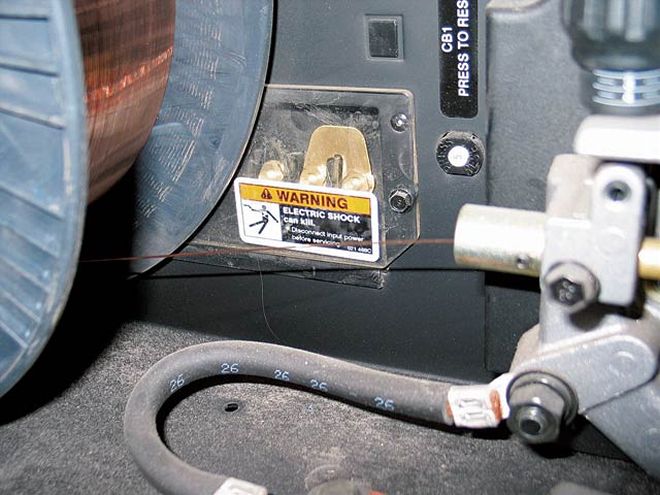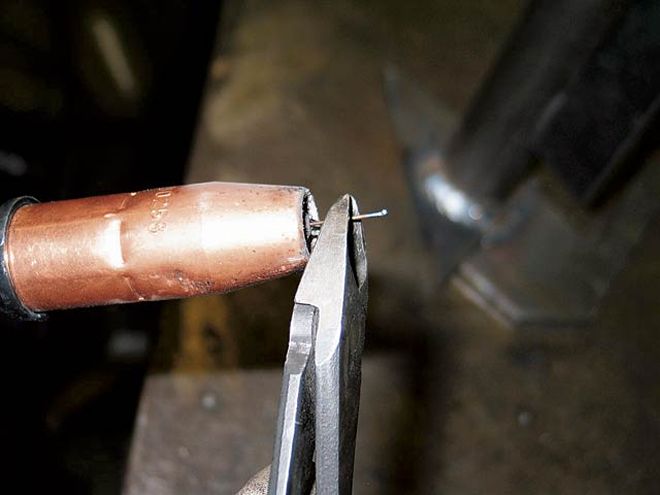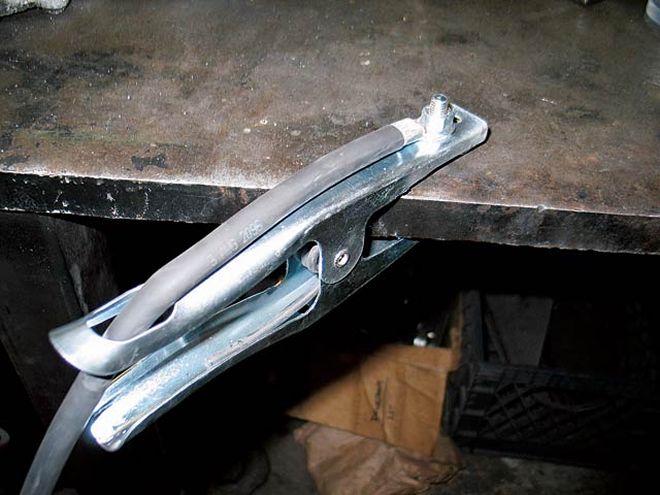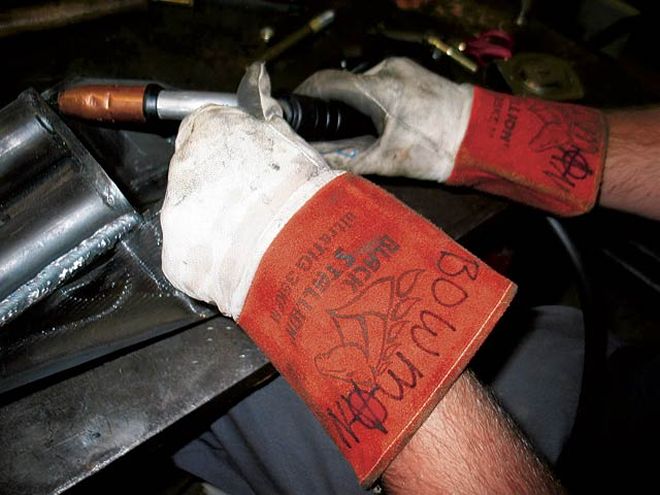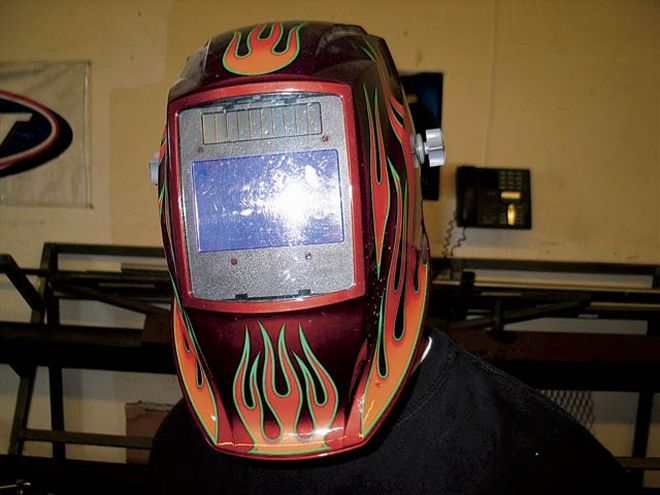Welding 101: Part I
If you haven't fabricated anything for your truck, but would like to, you can easily learn the most basic skill necessary -- MIG welding -- to build almost anything for your ride. We teamed up with one of the biggest names in the welding industry, Miller Electric, to prove that anyone can learn how to weld. We really mean anyone, since our own associate editor, Mike Alexander, was the guinea pig for this article and is pictured throughout the learning process. This article will give you the knowledge needed to safely operate a MIG welder and the basic how-tos of laying down a good weld. Once you have the basics down, with tons of practice, the sky is the limit and so is the level to which you can customize your own truck.
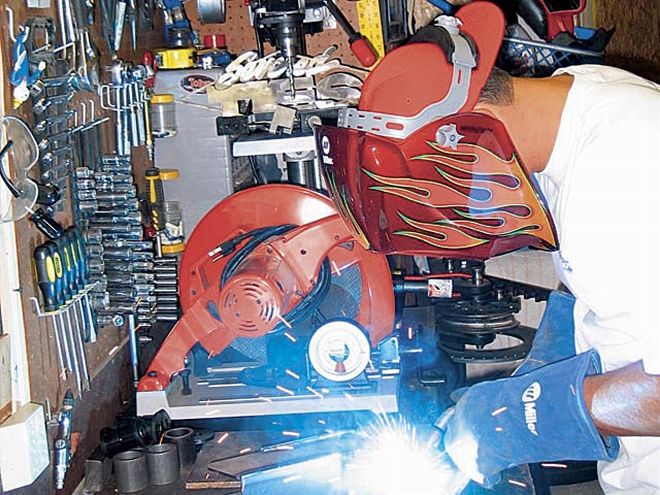
| 0501mt Weld01 Z
A wire-feed MIG welder outfit consists of the welder itself and several consumable items. These consumables include the electrode, welding wire, and shielding gas. A MIG welder is capable of welding ferrous metals such as steel, aluminum, and stainless steel, depending on what type of shielding gas you use and the diameter and the type of the weld wire. Since our trucks are built from steel, we'll concentrate our efforts toward making good welds on steel.
The MIG process welds steel together by heating the metal with an electric arc. The arc is generated between the electrode in the welding gun and the metal workpiece. This arc is shielded from contaminants in the atmosphere by the shielding gas. The most common shielding gas readily available at welding supply houses is a mixture of 75 percent argon and 25 percent CO2. This mix helps produce welds with little slag and excellent penetration. The wire we'll use in conjunction with the shielding gas will have a steel core with a copper coating and diameter of 0.035 inch. This wire will be suitable for welding steel with a thickness between 1/6 and 3/8 inch. When we weld sheetmetal, we can switch electrodes in our welding gun, then switch to a smaller-diameter wire such as 0.023 inch.
MIG-welding is one of the easiest welding processes to learn as well as the most inexpensive. For Part I of the welding series, we're going to focus on the basic MIG setup and how our first attempts at welding turned out. Then, we're going to practice our technique, and as time goes on, we'll show you what we learned and how our welding has improved.
 | 0501mt Weld01 Z
A wire-feed MIG welder outfit consists of the welder itself and several consumable items. These consumables include the electrode, welding wire, and shielding gas. A MIG welder is capable of welding ferrous metals such as steel, aluminum, and stainless steel, depending on what type of shielding gas you use and the diameter and the type of the weld wire. Since our trucks are built from steel, we'll concentrate our efforts toward making good welds on steel.
The MIG process welds steel together by heating the metal with an electric arc. The arc is generated between the electrode in the welding gun and the metal workpiece. This arc is shielded from contaminants in the atmosphere by the shielding gas. The most common shielding gas readily available at welding supply houses is a mixture of 75 percent argon and 25 percent CO2. This mix helps produce welds with little slag and excellent penetration. The wire we'll use in conjunction with the shielding gas will have a steel core with a copper coating and diameter of 0.035 inch. This wire will be suitable for welding steel with a thickness between 1/6 and 3/8 inch. When we weld sheetmetal, we can switch electrodes in our welding gun, then switch to a smaller-diameter wire such as 0.023 inch.
MIG-welding is one of the easiest welding processes to learn as well as the most inexpensive. For Part I of the welding series, we're going to focus on the basic MIG setup and how our first attempts at welding turned out. Then, we're going to practice our technique, and as time goes on, we'll show you what we learned and how our welding has improved.
| 0501mt Weld01 Z
A wire-feed MIG welder outfit consists of the welder itself and several consumable items. These consumables include the electrode, welding wire, and shielding gas. A MIG welder is capable of welding ferrous metals such as steel, aluminum, and stainless steel, depending on what type of shielding gas you use and the diameter and the type of the weld wire. Since our trucks are built from steel, we'll concentrate our efforts toward making good welds on steel.
The MIG process welds steel together by heating the metal with an electric arc. The arc is generated between the electrode in the welding gun and the metal workpiece. This arc is shielded from contaminants in the atmosphere by the shielding gas. The most common shielding gas readily available at welding supply houses is a mixture of 75 percent argon and 25 percent CO2. This mix helps produce welds with little slag and excellent penetration. The wire we'll use in conjunction with the shielding gas will have a steel core with a copper coating and diameter of 0.035 inch. This wire will be suitable for welding steel with a thickness between 1/6 and 3/8 inch. When we weld sheetmetal, we can switch electrodes in our welding gun, then switch to a smaller-diameter wire such as 0.023 inch.
MIG-welding is one of the easiest welding processes to learn as well as the most inexpensive. For Part I of the welding series, we're going to focus on the basic MIG setup and how our first attempts at welding turned out. Then, we're going to practice our technique, and as time goes on, we'll show you what we learned and how our welding has improved.
